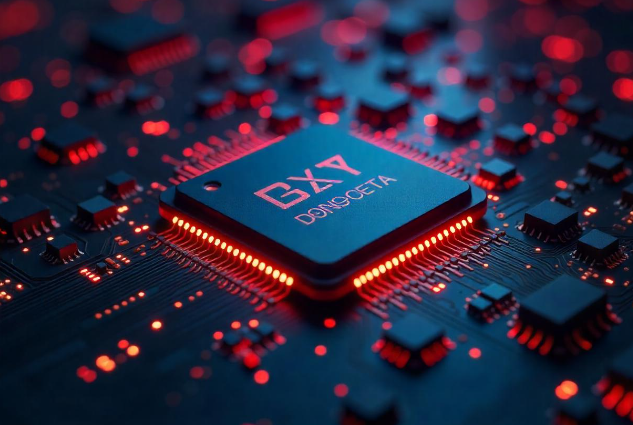Inside AheadComputing's Ambitious RISC-V Chip Technology
Discover how a new chip startup, AheadComputing, backed by $21.5 million in funding, plans to revolutionize CPU architecture with RISC-V to address AI-related bottlenecks.
Published February 20, 2025 - 00:02am

Image recovered from siliconangle.com
The burgeoning landscape of chip technology witnesses a fresh entrant, AheadComputing Inc., a newly established startup that has successfully secured $21.5 million in seed funding. This endeavor, led by a cadre of former Intel CPU architects, is set on a mission to revolutionize artificial intelligence chipset development using the open-source RISC-V architecture.
Founded by a team of seasoned experts, including Debbie Marr, Jonathon Pearce, Mark Dechene, and Srikanth Srinivasan, who collectively boast over a century of chip design experience, the company aims to address the bottlenecks presented by current CPU architectures. These obstacles, primarily affecting artificial intelligence and machine learning workloads, are deeply rooted in bandwidth shortages and data processing constraints within conventional CPUs.
The latest report by Flexential Corp. underscores the significance of this issue, highlighting that a staggering 82% of organizations faced AI workload performance challenges within the past year. These challenges emphasize the critical role conventional CPUs play alongside high-powered graphics processing units, indicating the pressing need for enhanced general-purpose computing resources.
AheadComputing's strategy involves the development of innovative 64-bit RISC-V processors. The aim is crystal clear: deliver enhanced per-core performance to meet the rigorous demands of today's AI workloads. As Debbie Marr articulates, the shift to RISC-V is a strategic choice, avoiding the inherent limitations of x86 and Arm architectures, both modelled by industry giants like Intel, AMD, and Arm Holdings Ltd.
Marr emphasizes the openness of the RISC-V framework, which is devoid of monolithic control, thereby fostering a fertile ground for innovation with countless contributors. The RISC-V ecosystem is open, it's not owned, it's not controlled by one company. There are hundreds of players. There is plenty of room for innovation, she notes, reflecting the widespread potential for growth and advancement.
The startup's funding round involves notable investors, including Eclipse, Maverick Capital, Fundomo, and EPIQ Capital Group, with contributions from Jim Keller, the Chief Executive of RISC-V venture Tenstorrent and former designer of cutting-edge chips for Apple, Intel, and Tesla.
While details of AheadComputing's future innovations remain largely under wraps, the company assures that its RISC-V CPUs will herald breakthrough achievements in power efficiency, mitigating existing AI and server application bottlenecks. Central to their innovation are improvements in per-core performance, thermal density constraints, and multiprocessor scalability. The anticipation surrounding its upcoming chips promises a new benchmark for both single-thread and multi-core performance in the industry.
In the pursuit of these ambitious goals, AheadComputing plans to utilize the seed funding to increase its engineering workforce and demonstrate their technology's capability to enhance CPU core performance. Greg Reichow, representing lead investor Eclipse, affirms the startup's potential, asserting that with their esteemed leadership, the company is uniquely positioned to tackle the current challenges in the computing sector effectively.
Structurally and conceptually nimble, AheadComputing defines its journey as a timely endeavor to craft a product highly aligned with market needs. With RISC-V technology gaining traction, Reichow observes an increasingly favorable market environment, marking AheadComputing as a significant player poised to impact industries ranging from mobile to networking and industrial sectors.
The industry's interest in RISC-V isn't unfounded. As an architecture, RISC-V represents a paradigm shift from legacy systems controlled by a few dominant players, towards an open-source and collaborative landscape where technological innovations can thrive. This aspect holds particular interest for those critical of the potential pitfalls associated with reliance on singular architectures from companies like Arm and Intel.








